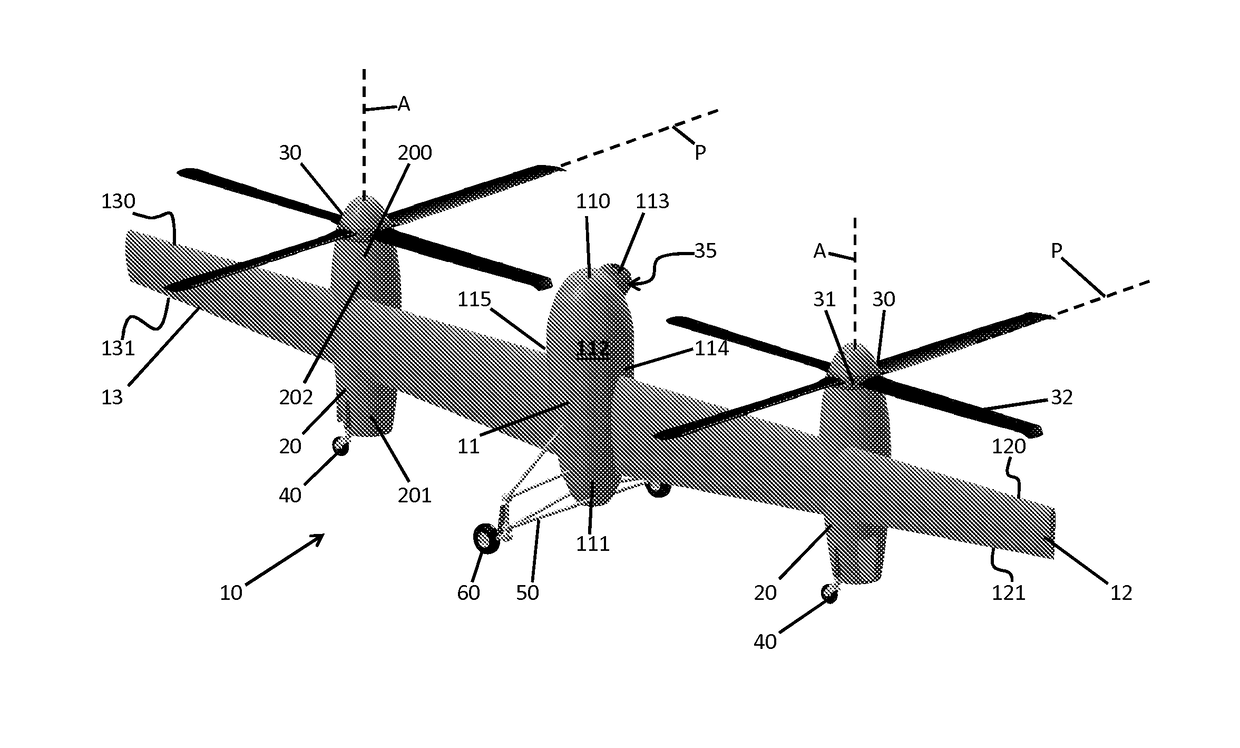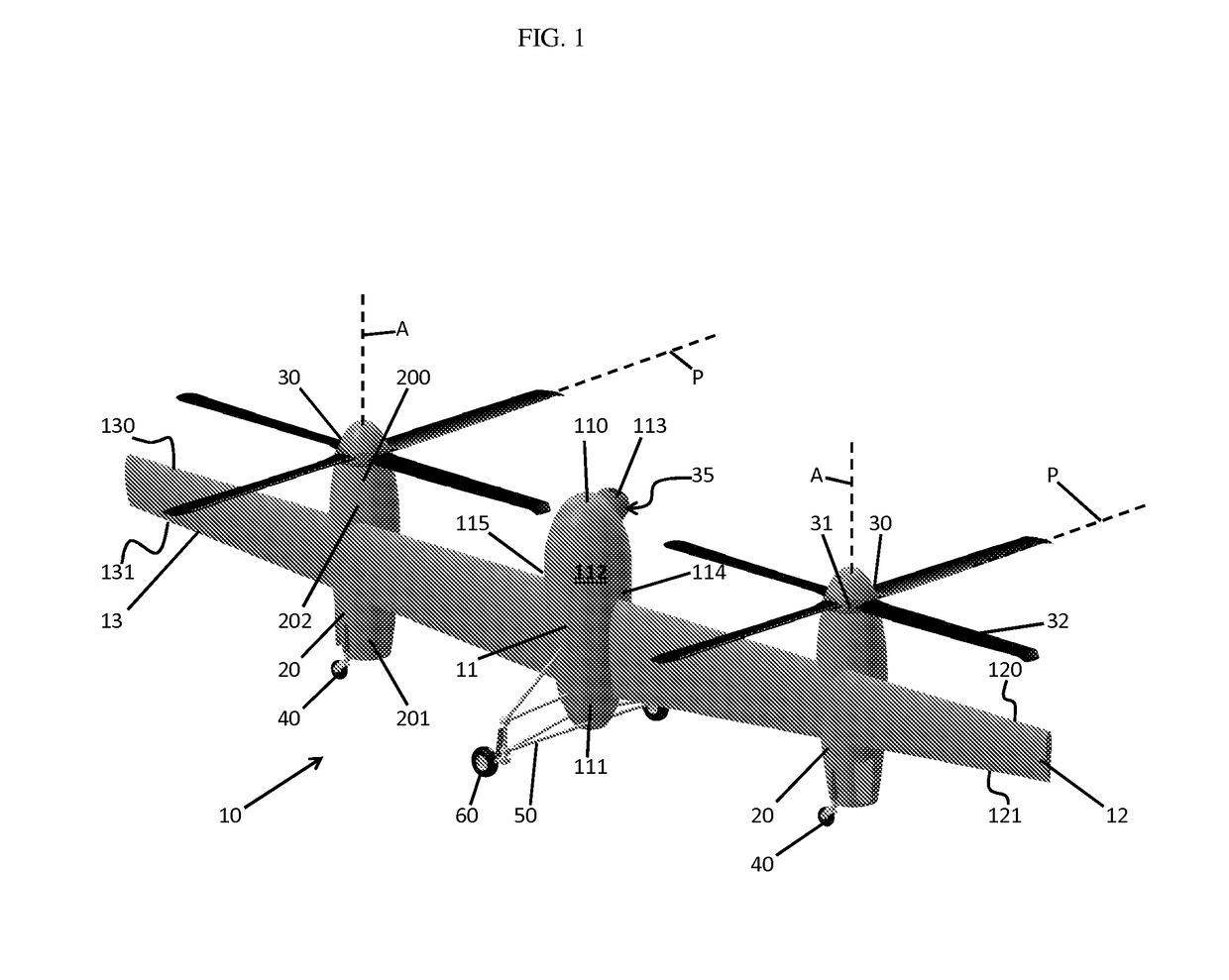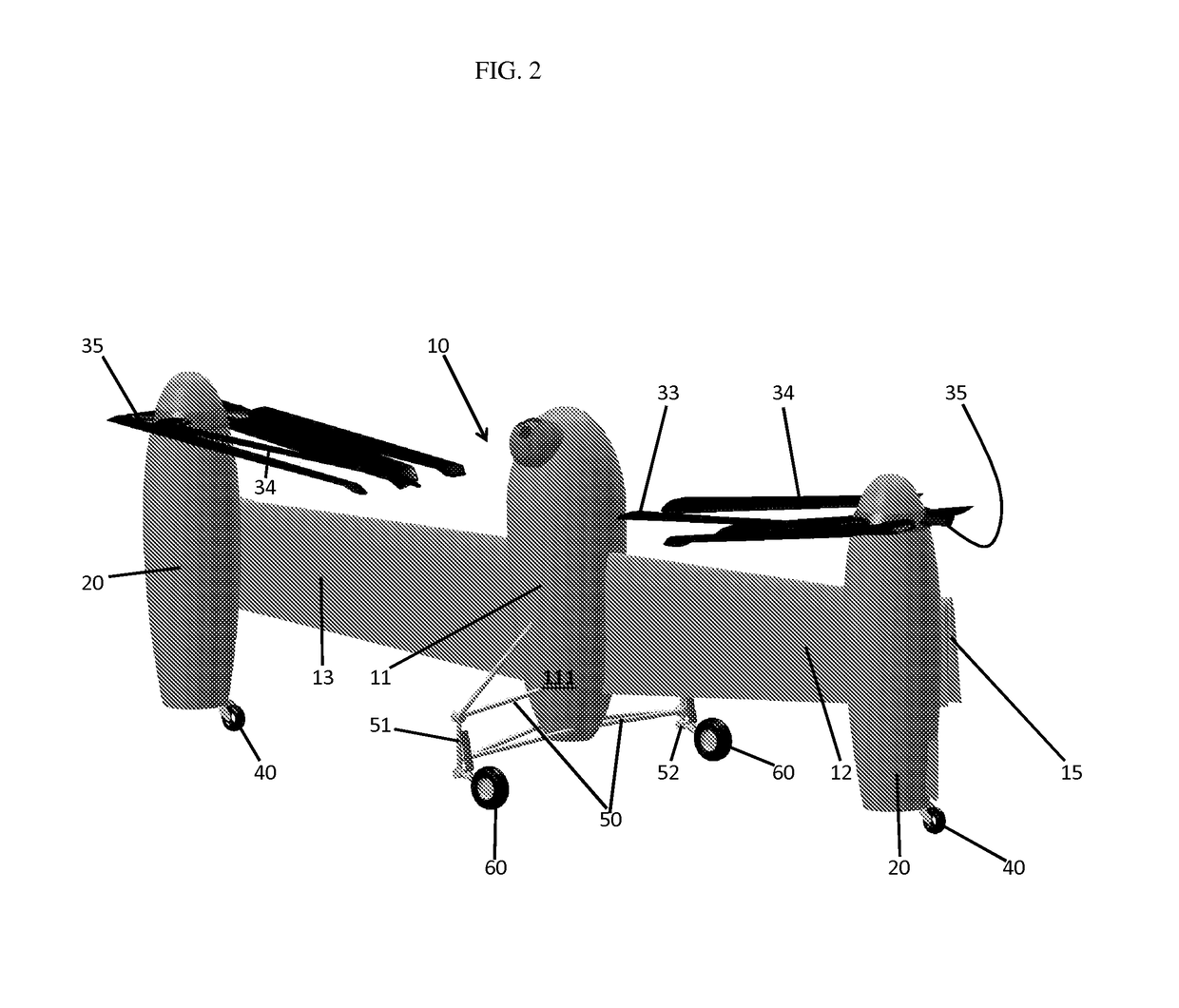Flying wing vertical take-off and landing aircraft
a vertical take-off and landing and flying wing technology, applied in vertical landing/take-off aircraft, aircraft power plants, vehicles, etc., can solve the problems of long range and endurance, high complexity and higher empty weight, and difficulty in folding the wings
- Summary
- Abstract
- Description
- Claims
- Application Information
AI Technical Summary
Benefits of technology
Problems solved by technology
Method used
Image
Examples
Embodiment Construction
[0026]As will be described below, a flying wing VTOL aircraft is provided and includes a rigid rotor system having full cyclic control. This allows for a flying wing VTOL aircraft that takes off vertically, and has the ability to transition to wing borne flight by simply pitching the cyclic control forward to thereby cause the entire flying wing VTOL aircraft to rotate from a vertical to a horizontal orientation. By discarding any special rotation actuation mechanisms, typical penalties of higher weight and added complexity are removed. In addition, the active proprotors have the added advantage of permitting an elimination of ailerons and evlerons from the wings thus leading to further reductions in weight and cost. Meanwhile, the aircraft enhances shipboard operations by elimination of the horizontal tail, elevator and rudder from the overall configuration as this allows the wings to be folded and the aircraft to be stowed in a limited spatial environment.
[0027]With reference to F...
PUM
 Login to View More
Login to View More Abstract
Description
Claims
Application Information
 Login to View More
Login to View More - R&D
- Intellectual Property
- Life Sciences
- Materials
- Tech Scout
- Unparalleled Data Quality
- Higher Quality Content
- 60% Fewer Hallucinations
Browse by: Latest US Patents, China's latest patents, Technical Efficacy Thesaurus, Application Domain, Technology Topic, Popular Technical Reports.
© 2025 PatSnap. All rights reserved.Legal|Privacy policy|Modern Slavery Act Transparency Statement|Sitemap|About US| Contact US: help@patsnap.com



